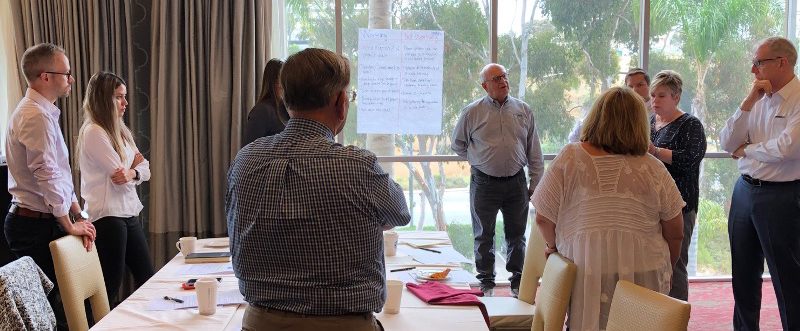What’s missing in your team facilitation?
Tossing toys on the table for participants to fiddle with is not a requirement of facilitation. You may have encountered facilitators with ELMO dolls (“Enough Let’s Move On”) and squishy toys or wooden puzzles. It’s ok, but I find “prop comedy” unnecessary in design and construction.
So if toys are not what your team meetings are missing, what IS missing? Preparation, Enthusiasm and Neutrality. P-E-N. That’s the basis of facilitation.
PREPARATION: The meeting leader – who may or may not be the meeting facilitator – is primarily responsible for the Preparation for the meeting: drafting the purpose of the meeting, the agenda (sent out several days in advance), the attendee/invitee list, scheduling the logistics of where, when and what “supplies” or tools are needed. The facilitator must assure that’s done in a timely manner, since many meeting leaders are overworked managers.
Preparation also means self-preparation. Being self-aware, open, and inquisitive. Continuous learning of new, better ways of working with groups of people, taking advantage of courses, reading, video and daily learning from each other is part of preparation. And preparation means knowing the “language” of the group. If you’ve spent your life in construction and are asked to facilitate a group of brain surgeons considering a new experimental technique, how effective will you be? Admittedly, construction is not brain surgery or rocket science. As a facilitator you don’t have to have the Subject Matter Expertise of all those in the room, as long as you understand the terms and overall processes: the language of the group. So…yes, some of the best design and construction team facilitators have at least a few years of experience in this field. That’s part of our preparation.
ENTHUSIASM: If the facilitator is dull, bored, listless…the meeting will suck. The room will have little energy, and the participants will likely get little accomplished. What they do get done won’t be their best work, because they’ll be uninspired. But enthusiasm in voice, tone and body language is contagious and uplifting. It sets an expectation, and sets a pace the group will fall into. The facilitator is the “front runner”.
If you’re not usually “that person” – energetic, enthusiastic – then you have a choice: either don’t be the facilitator, or “fake it till you make it”. Yep, think of it as an acting assignment. Tom Hanks isn’t really at all like Forest Gump. But, in the old movie, he acted the part, thoroughly, and drew us in and made it believable. Lots of us facilitators – and many many leaders – are really introverts. We draw energy from being alone, not from groups. So being “on stage” energetically is a bit of an acting job. It gets easy after a while.
NEUTRALITY: This is the absolute essential to facilitate a group. The facilitator must establish a safe space – physically and psychologically. A neutral zone where all persons and ideas are valued and no one dominates or bullies another regardless of rank or seniority.
But Neutrality operates in another sphere: an industry-experienced facilitator of a group considering the root cause of a problem, or some important decision to make, may very well have their own ideas of the root cause or the better decision. But it’s NOT THEIR DECISION. It’s up to the group. Sure, you gotta keep them from stampeding off a cliff if you see something ill-advised happening. But the moment a facilitator wants to weigh in with an opinion, that’s the moment for the facilitator – with a grand hand gesture – to hand off the PEN to another group member, who now becomes the neutral facilitator. “I’d like to weigh in on this, because I’ve had this experience before…Joanna, could you facilitate this portion of the discussion?” And they exchange places, physically. Neutrality so important, that it must be that dramatic. So no one misses it.
Better yet, just facilitate. We have plenty of smart brains around us. They’ll figure it out.

